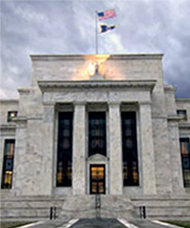Fed Governor Jerome H. Powell gave a speech on August 3rd at the Brookings Institution. The speech, called “Structure and Liquidity in Treasury Markets”, focused on what has been happening in the secondary markets. What did he say?
The poster child for market liquidity dysfunction was the October 15, 2014 “flash crash” in the US Treasury market. Jamie Dimon said his April 8, 2015 annual letter to shareholders:
“…Then on one day, October 15, 2014, Treasury securities moved 40 basis points, statistically 7 to 8 standard deviations – an unprecedented move – an event that is supposed to happen only once in every 3 billion years or so…”
A common definition of illiquidity (and the one Powell cited) is: a reduced ability to buy or sell large positions without material price effect. Clearly there was illiquidity on October 15, 2014. This is not the only example of liquidity disappearing. Governor Powell cited:
“…the 2013 “taper tantrum,” the “bund tantrum” last spring, and the sharp moves on March 18 in the euro-dollar exchange rate–all broadly show the same pattern: rapidly diminishing liquidity, and large price moves for a given quantum of news…”
It is not just one thing that pushes a market over the brink, if even for 10 or 15 minutes. It is a combination of factors.
Many have placed the blame for disappearing liquidity squarely on regulation. But Powell wasn’t buying it.
“…Regulation is only one of the factors–and clearly not the dominant one–behind the evolution in market making…”
Powell gave a special shout-out for electronic trading and the technology behind high frequency trading.
“…Thanks to advances in telecommunications and computing, the speed of trading has increased at least a million-fold…”
The prize goes to the fastest player. They can pick off bad prices in a nanosecond.
“…A trader that is faster than the others in the market will be able to post and remove orders in reaction to changes in the order book before others can do so, earning profits by hitting out-of-date quotes and avoiding losses by making sure that the trader’s own quotes are up to date…”
The cost to build out these systems is high and not everyone can afford it. Those who can pay the freight end up with larger market share. This contributes to a further concentration of the markets. That concentration makes the market vulnerable should there be a sudden withdrawal of liquidity.
On changing ownership patterns of US Treasuries and how that impacts liquidity:
“…Treasury and the Federal Reserve and foreign owners (about half of which are foreign central banks) have increased their ownership to over two-thirds of outstanding Treasuries (up from 61 percent in 2004). Banks have also increased their holdings of Treasuries to meet HQLA requirements. These holdings are less likely to turn over in secondary market trading, as the owners largely follow buy and hold strategies. Another change is the increased presence of asset managers, which now hold a bigger share of Treasuries as well. Mutual fund investors, who are accustomed to daily liquidity, now beneficially own a greater share of Treasuries…”
Dark pools are also an area of concern for Powell. By matching buyers and sellers internally, Powell acknowledged that dealers could capture more of the bid-ask spread. But taking this trading out of the public markets reduces price discovery and, ultimately, liquidity. The only trades that hit the public markets are the ones that cannot be satisfied internally.
Addressing the impact of regulation, Powell mention repo:
“…Requiring that banks hold much higher capital and liquidity and rely less on wholesale short-term debt has raised funding costs. Regulation has also raised the cost of funding inventories through repurchase agreement (repo markets). Thus, regulation may have made market making less attractive to banks…”
Governor Powell appears to be a fan of central clearing for repo.
“…there is a link between funding liquidity and market liquidity, and for Treasury markets the links to funding in the repo market are especially close. Post crisis reforms have made the repo market safer but also raised the costs of repo transactions. Greater use of central clearing could potentially lower these costs by allowing participants to net more of their transactions. Authorities have emphasized a greater use of clearing for a wide range of products, and I believe there could be benefits to greater clearing in repo markets as well. There are several private proposals to accomplish that, and any solution will have to satisfy demanding regulatory requirements…”
The speech may seem to some as an exercise in spreading the blame. But we don’t really think that is the case. It is outside the power or interest of the Fed to exercise control over many of these factors. The exceptions may be dark pools and high frequency trading…and of course CCPs for repo. It will be interesting to see over the next year or so how serious the Fed is about fixing market liquidity and the steps they are willing to take. But rolling back regulation is not going to be one of them.



1 Comment. Leave new
What is worrying about this speech is not that Governor Powell identifies factors other than the new regulatory environment as causes of reduced liquidity. It is that he does not seem to be concerned about this new dynamic regardless of its origin. A reduce level of liquidity in the US treasury market is a worrying situation especially as the Fed begins to tighten interest rates.